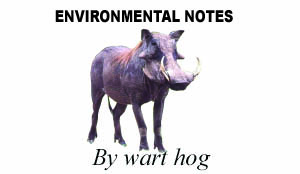 GRASSLANDS were originally home to many different animals, large and small. Human beings discovered that some of these animals made excellent sources of food. Grasslands are natural ecological communities dominated by grass and with less than 10 per cent natural tree or shrub cover. They contain many grass species and an even greater diversity of other herbs. Grasslands are among the most species rich plant communities in Africa.
GRASSLANDS were originally home to many different animals, large and small. Human beings discovered that some of these animals made excellent sources of food. Grasslands are natural ecological communities dominated by grass and with less than 10 per cent natural tree or shrub cover. They contain many grass species and an even greater diversity of other herbs. Grasslands are among the most species rich plant communities in Africa.
The Western Zambezian grasslands are found in areas of sandy soil north and south of the Barotse Floodplain in eastern Zambia. They are characterised by deep, sandy, nutrient-poor soils which are waterlogged during the rainy season, and become very dry during the dry season.
They are intertwined with the Zambezian Cryptosepalum dry forests Eco region, which is found on similar soils at slightly higher elevations with better drainage. Surrounding Eco regions include the Zambezian flooded grasslands of the Barotse Floodplain, the Angolan Miombo woodlands to the northwest, the Central Zambezian Miombo woodlands to the northeast and east, and the Zambezian Baikiaea woodlands to the east and south.
Grasslands also offer the potential to provide economic benefits from clean energy production. There is a growing emphasis in the potential for biofuels from harvested grasslands to replace practices with higher emissions. Grasslands also exist is some of the most wind-rich regions of the country. If these new sources of energy are planned so not to adversely impact wildlife populations, they could result in the restoration of more acres of grassland in areas of marginal cropland and boost struggling rural economies.
The maintenance of amenity grasslands is surprisingly high, forcing many local authorities and land-owners to seek cheaper management protocols or regimes. Allowing grassland habitats in urban settings for the provision of native or naturalized grasses and flowering plants offers several advantages:
• Plant diversity attracts insects (including butterflies and bees), arthropods (from spiders to millipedes), birds and mammals.
• Opportunities for education and recreation abound.
• Even small plots of wildflower planting can change the atmosphere of a setting – the creation of a wildflower meadow as part of an urban greenspace can bring a little piece of countryside into the town.
• The reduced-intensity management needed for rough grasslands and urban commons makes them a cost-effective alternative to closely mown amenity grassland.
• Where flowering species flourish, a changing palate of colour is added to the urban environment throughout the seasons.
•Involving the local community in managing the site, for example in mowing or grazing regimes, encourages personal investment in the site.
Where recreation and tidy appearance are priorities in an urban green space, long grasses have been replaced with traditional, short, regularly mown grass. Tall grasslands and wildflowers may not be appropriate and can often be seen as unsightly and unattractive both before and after flowering. Others see tall grasses as a fire risk; and others as a dog latrine or a focal point for littering.
But there are benefits of grasslands that merit their wider consideration.
•Biodiversity – while short grasslands attract birds and invertebrates of grassland and open habitation, tall grasslands will also tend to include nectar-rich plants, in turn attracting hoverflies, butterflies, moths and bees. The habitat will also be more likely to support small mammals and even reptiles.
•Social benefit – tall grasslands are particularly attractive to young researchers, stimulating the imagination and natural play, educating with respect to insects and other invertebrates associated with the habitat, and introducing them to wild habitats.
•Economic sustainability – the management regime for grassland varies according to the specific habitat to be created (or maintained) and the objectives associated with it. The management regime for tall grasslands and wildflower meadows is less intensive than for closely mown grasslands, so they can be a cost-effective alternative.
The importance of tall grass and meadowlands, including interpretation of the habitat’s biodiversity, may stimulate interest.
Rough grassland and wildflower meadows are suited to a grazing management regime. Grazing plays a key role in maintaining species richness by limiting the ability of competitive species to achieve dominance, and influencing the proportion of competitors (stress-tolerates).
A high proportion of grassland species are perennials. The removal of plant biomass by a hay harvest or by grazing maintains floristic diversity by reducing nutrient recycling and subsequently suppressing soil fertility.
Grazing can be selective towards rare or local livestock breeds, and thus play a role in rejuvenating rural economies and promoting traditional rural skills. Grazing animals also provide a fascinating educational resource.
Wildlife & Environmental Conservation Society of Zambia
P.O. Box 30255, Lusaka, Zambia.
Telefax: 260-211-251630, Cell: 0977-780770
E-mail: wecsz@coppernet.zm






